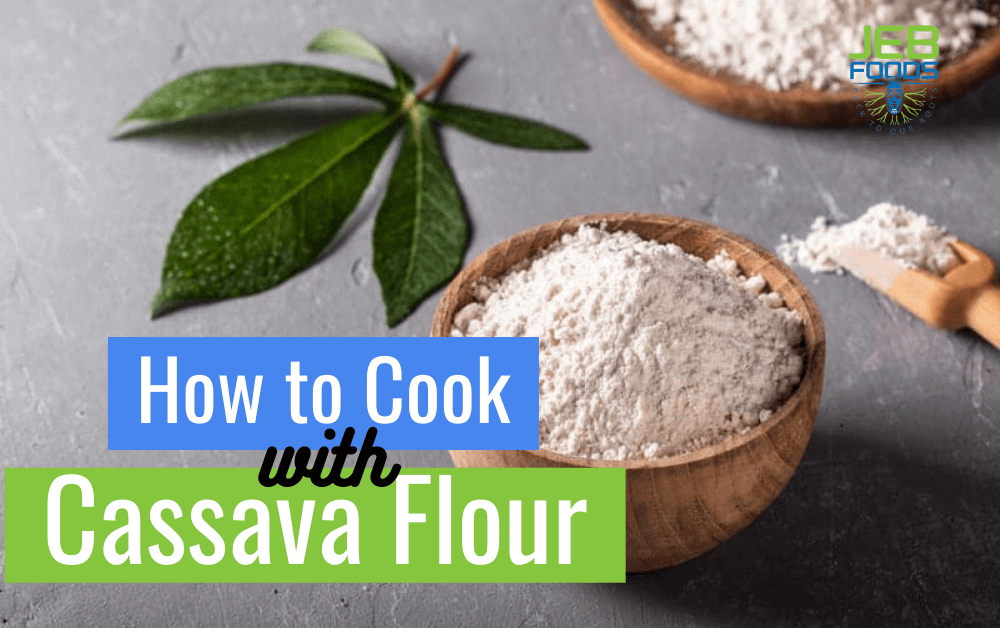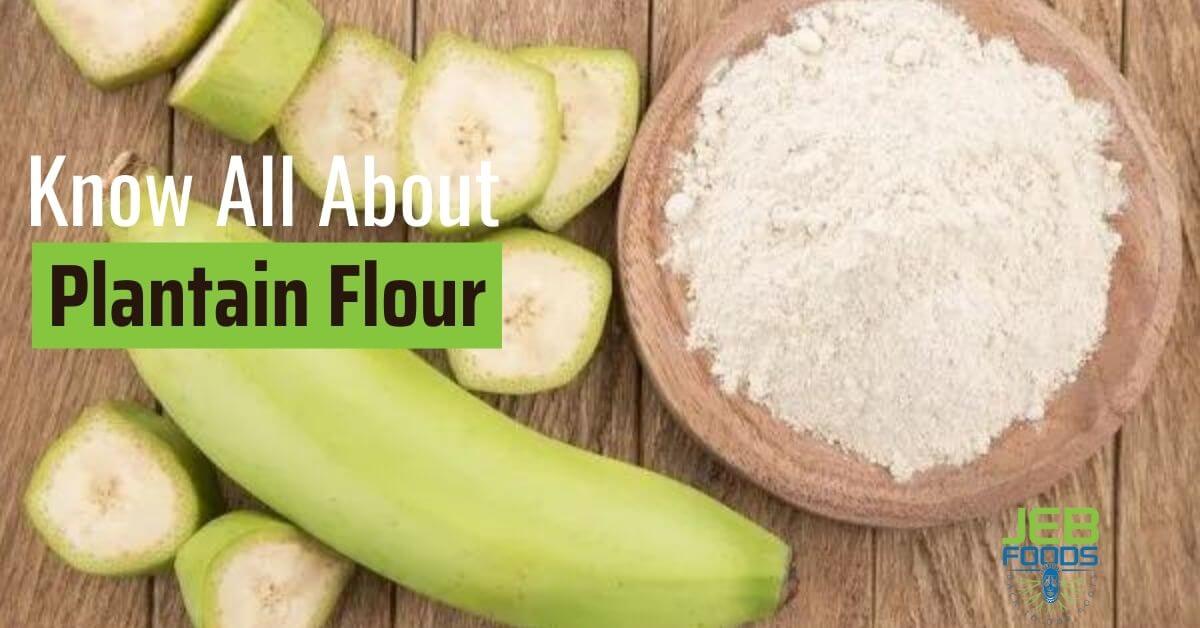Learning to cook with cassava flour is a must if you want to get the best out of this wonderful crop made to bless humanity by nature.
Various excellent recipes can be made from cassava flour but may not develop if not inspired.
Cassava flour is a grain-free and gluten-free alternative to regular flour when baking or cooking. It is processed from the cassava root, which grows in South America and Africa.
Cassava flour, unlike some other grain-free flours, is soft and powdery. It also has a more neutral taste and a mild flavor that doesn’t significantly affect the taste of your food.
As a baker and having used cassava flour for 8 years, let me show you how to cook with cassava flour
See how to make tortillas with cassava flour
Using Cassava Flour As A Substitute
Table of Contents
Toggle1. Avoid cooking things that need to rise. Cassava flour is denser and works well in products like cookies and brownies but poorly in bread that needs to rise significantly.
The foods made with cassava flour are typically a bit denser than if you used an all-purpose flour or any other flour that contains gluten.
Avoid using cassava flour in recipes where your food rises like cake. Cassava flour works well in dishes such as tortillas, pita bread, cookies, and brownies.
2. Cassava flour should be weighed. While a measuring cup is usually adequate for most cooking tasks, cassava flour is thicker than regular wheat flour.
This is why you should use a digital scale to weigh your flour before using it in a recipe. If you don’t have a scale, the best precise technique to measure your flower is to stop it and unwind it with a spoon measuring.
This will prevent it from shutting down. Once done, measure it with a butter knife or other straight utensil.
3. As a replacement for wheat flour, use a 1: 1 ratio. In many situations, the cassava flour works at a 1: 1 ratio, at which you would normally use wheat flour.
The only exception is when you deal with recipes that need to rise or use yeast, as the flour is known to stretch and have problems.
Cassava flour doesn’t have the same nutritional value as wheat; if you choose to use it, make sure you supplement your diet with other foods that contain vitamins and nutrients.
4. Start with the recipes you know. To understand how to use the cassava flour properly, you should start working on the recipes you are already used to.
Notice how using cassava flour changes the consistency and taste of your food. Determine whether to use the flour before incorporating it into more complex recipes.
Once you’re comfortable with cassava flour, experiment with other recipes. Cassava flour will add a subtle earthy and nutty flavor to what you cook. Take this into account when creating dishes.
5. Purchase cassava flour that is free of artificial ingredients. Look for goods that are labeled “100% Yuca (cassava).
Avoid flour brands with artificial chemicals or additives, as they are less nutritious than basic cassava flour.
The only component in pure cassava flour will be yuca. Sometimes cassava flour is called manioc flour. Popular cassava flour is Jeb Foods Cassava Flour
6. Set the recipes that contain yeast. If you want to make a recipe that calls for yeast, you may substitute Xanthan GUM. Xanthan gum aids in the binding of cassava flour.
If you are not vegan, adding an extra egg to a recipe might assist bond dishes that require yeast. For most recipes, add 1/2 teaspoon (2.46 ml) of xanthan gum for every cup of flour you use.
7. Recognize that cassava flour is not the same as tapioca flour. While tapioca and cassava are both manufactured from the same root, both are not the same.
Tapioca flour is traditionally used as a thickener and works well in puddings or sauces, while cassava flour can be used as an all-purpose substitute or gluten-free flour. Don’t get the two confused when purchasing your cassava flour.
Tapioca is cassava starch taken from the root, whereas cassava flour is prepared by crushing and peeling the entire root.
Integration Of Cassava In Common Recipes
1. Gluten-free cupcakes may be made with cassava flour. Cassava-based cupcakes are ideal for individuals with a food allergy or who follow a strict diet but want something sweet. Whipped egg whites will lighten and fluff up your cassava cupcakes.
2. Make tortillas out of cassava flour. Cassava flour is an excellent flour for making tortillas or naan.
To make tortillas, mix 1 cup (122.00 g) cassava flour, 1/4 teaspoon (1.23 mL) baking soda, and 2/3 cup (157.72 mL) warm water.
Before cutting out circular tortillas, knead and roll out the flour into a flat sheet.
After you’ve cut them out, cook them for a minute on each side in a skillet with butter or oil. Instead of getting a grain or corn tortilla, use your tortillas made with cassava flour.
3. Cassava flour may be used to make brownies. Cassava flour works nicely in sweet baking recipes such as brownies and cookies.
If you’re vegan or vegetarian and don’t eat eggs, you can replace them with something like a pumpkin puree or applesauce to tie your brownies together.
Create the brownies you would naturally, adding more flour for thicker, richer brownies.
4. Incorporate cassava into pancakes. Cassava flour is excellent for creating pancake batter. Cassava absorbs more moisture than conventional flour, so take this in mind while preparing your recipe.
Since this is the case, you will need to add more milk or eggs to the recipe you are making
5. Make pizza crust with cassava flour. You can substitute the yeast or egg found in a traditional pizza crust with 2 TBSP baking soda.
To compensate for the amount of liquid cassava flour can contain, mix each cup of cassava flour with 1/2 a cup of warm water.
To glue together, cassava flour can also be used with other flours, such as coconut flour.
Here are the nutrition and health benefits of cassava flour

Using Cassava Based On Health Needs
1. Try cassava flour when on a paleo diet. A paleo diet consumes meat, fish, fruits, vegetables, and nuts, while foods contain grains, refined sugars, and processed foods.
Cassava flour, which substitutes the grains included in typical all-purpose grinders, is a fantastic alternative if you embark on this diet.
2. If you have food sensitivities, use cassava instead. And can help those with celiac disease or gluten sensitivity. Cassava is gluten-free and may be used as a replacement in a variety of situations. Which can also be used in recipes for other food sensitivities, such as wheat allergies.
3. Cassava roots should not be consumed uncooked, because it has naturally occurring cyanide chemicals, making it hazardous to ingest uncooked.
During processing cassava flour is cleansed of these substances throughout the manufacturing process. You are not consuming this RAW if you produce cassava root flour.
Linamarin is the poisonous ingredient found in cassava. Cassava poisoning can cause liver, kidney, and brain damage.
4. Discover the advantages of using cassava flour, which provides various health advantages, including high-calorie content and being a good source of carbs.
It is also completely nut, gluten, and grain-free, so it’s good for nut allergies or celiac disease. Cassava also contains beneficial nutrients and vitamins, including B vitamins and potassium.
How Is Cassava Flour Used In The Kitchen
Cassava flour contains plenty of starch, which ensures a perfect flour consistency compared to similar flour alternatives made from quinoa.
For example, there is no need for any additional ingredients to make a firm dough.
It can also be used as a binding agent for soups and stews, for baking bread, like bread, sweet treats such as cookies, cakes, waffles, or pancakes, or as a couscous (fry with butter and onion).
But if you are on Candida diet and you will love to know if you can take cassava flour on the diet, I treated that here.
Can You Lose Weight With Cassava Flour
Cassava flour is not real low-carb food, but it contains significantly fewer carbohydrates than conventional white flour.
The 38 grams of carbs that 100 grams of exotic flour contain are also among the good carbohydrates that provide the body with plenty of energy.
If you want to lose weight, you can use cassava flour as a slimming alternative.
Most Common Ways To Benefit From Cassava
1 – Baked in the oven
Fried cassava is one of the most admired appetizers among Brazilians. For a healthier version of the starter, cassava should be baked. Preparation is very simple: peel the cassava, cut it into medium-sized pieces and cook with plenty of water until firm to the bite.
Expect to cool, remove the central fibers and cut into potatoes to fry. Put in a greased casserole dish and sprinkle a little salt and spices as desired. Add a little butter or olive oil, cover with foil and bake for 20 minutes. Remove from oven, remove foil, and bake for another 15 minutes or until crispy.
2 – How to puree
Make cassava mashed potatoes like you do potatoes, including adding milk or sour cream. You will find that the consistency is a little different, but the taste and nutritional value outweigh the above—season to taste with a little lemon juice.
3 – Roast on the grill
Season some cooked cassava with olive oil, salt, and pepper and place on the grill for a few minutes. Serve as a side dish to the barbecue.
4 – salad with mayonnaise
Cut the cooked cassava into small cubes and season with the mayonnaise of your choice, salt, olive oil, and lemon. Chill before serving.
From the world
– Cassava starch is used in the manufacture of sago – or “white pearls,” which are used in popular dishes in India, Pakistan, and Siri Lanka.
– Cassava flour is used to make bread, cakes, and cookies in the Caribbean islands.
– In Nigeria and Ghana, cassava flour is used with yam to make a type of polenta that is served as an accompaniment to pickled meat.
What Can Cassava Flour Be Used For
The flour is processed differently depending on the region.
It is used to prepare a kind of cake (for example, the Brazilian Beiju ), which is more or less similar to bread, or the mandioca flour is mixed with wheat flour, for example, with Conaque in the Antilles.
The side dish Farofa and the drink Tarubá are also made from cassava flour in Brazil.
It is mainly used in the united states for baking, i.e., bread, muffins, cookies, cakes, brownies.
How To Use Cassava Flour During Baking
The simple process of using cassava flour is illustrated here. Cassava works well in dishes that call for wheat flour, including baking.
The truth is, it’s generally accepted that you can substitute cassava flour for all-purpose flour one for one, but in fact, you may need to alter your favorite recipes to adjust.
While all-purpose flour is granular and lightweight, it holds more moisture, so you may need a bit less of it than you are used to.
Can Cassava Improve Your Health
It is, and it isn’t. It is both gluten- and grain-free, thanks to cassava flour. While these two characteristics don’t make a food item nutritious, this flour is a better alternative for celiac disease, non-celiac gluten sensitivity, or wheat allergy.
A great way to help those with a sluggish digestive system or an autoimmune disorder is to reduce or eliminate wheat, and cassava is a useful alternative.
However, you have to be aware of how much you are eating, even better. And purchase the well processed and certified brand Jeb foods cassava flour to ensure maximum baking experience.
Final Thought
It’s very neutral, although cassava can have a somewhat sour taste (the flavor depends on the type of cassava), so be aware of that.
The consistency of cassava flour may be rather light; however, various brands vary in weight. To ensure that you use the right amount of cassava flour, weigh it instead of measuring it with a cup.




